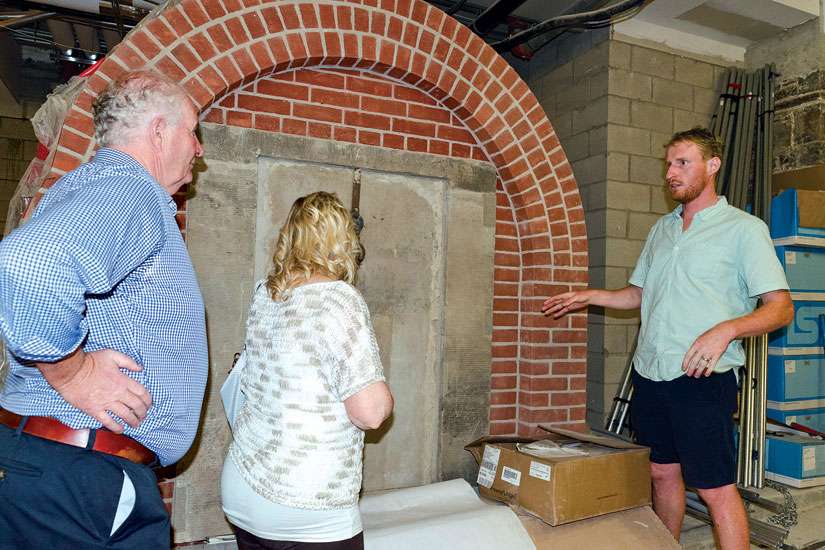As part of the $128-million restoration project, Nugent constructed two crypts below the cathedral in what will become known as the Crypt Chapel. These two new red brick entombments with arched roofs are the final resting place for 22 people, 11 in each, including Charles Donlevy, founder of Toronto’s first Catholic weekly newspaper The Toronto Mirror, Eduardus McMahon, who served as the private secretary for Lt.-Gov. General John Colborne, as well as eight children, two of whom died as infants.
All together there are 16 crypts beneath the cathedral which contain a total of 67 bodies, including Bishop Michael Power, Archbishop John Walsh and Archbishop John Joseph Lynch, as well as a number of unidentified bodies.
“There is a lot of history of the Irish coming over to build this church and I am just happy to be part of that by keeping it going,” said Nugent, in Canada for five years now. “A lot of the Irish tradesman emigrated you know. They came in and had done a lot of their work free of charge and helped raise money for the building of the church.”
The Great Famine of the mid-19th century in Ireland brought an unprecedented influx of immigrants to Toronto. Between May and October of 1847, than 38,000 Irish landed in Toronto, a city of just 20,000. Most stayed only a short time, before making their way to New York or Boston. With little work available, many of the Irish labourers and tradesmen volunteered on the cathedral’s construction site. Although poor monetarily, the newcomers were rich in faith, said Nugent.
“Irish people have such a strong faith,” he said. “In Ireland, in the years gone by especially, it was very rural and the church would have probably been the main meeting point. It was probably the biggest part of most people’s lives.”
Similar to the Irish of the 1840s, Nugent found working on the cathedral helped him settle in Canada. He said that faith “promotes people to look out for and take care of their neighbours,” which for the Irish immigrants during the 1840s meant building a grand cathedral.
“For Irish built by Irish,” said Nugent. “Ireland has produced a lot of people who have gone abroad ... and built things like this to show their appreciation and to leave a trace of them to be remembered. I’m proud to be a part of that.”
His parents share that sense of pride.
“It gives me great pleasure to know that my son who has come over to work as a bricklayer has taken part in this big procedure here with the crypts,” said his mother, Kathleen Nugent. “To think now that Irishmen had come and started and built this wonderful cathedral and today it has been kept going. It is just one of those things that keeps the faith alive for us all.”
Nugent’s parents were in Toronto in August to visit their son, his expectant wife Jennifer, and her parents. Nugent took his parents to the cathedral Aug. 14 for Sunday Mass followed by a trip into the crypts.
“I didn’t imagine it on such a large scale,” said his mother. “Now seeing it in all reality here it is just mind boggling the amount of work that is going on. I’m so proud.”
Her husband Michael echoed that view. “To be able to say that you had a son who actually worked on it and was part of it, it’s an honour,” said the retired construction worker.
When completed, the Crypt Chapel will include seating for perhaps 300, so that school or other groups can attend Mass near the memorial of Bishop Power. Although Nugent completed his task three years ago, much work still needs to be done before the Crypt Chapel opens to the public. But that hasn’t stopped Nugent from planning a trip with his child, still under construction in his wife’s womb, to pass on the history of the Irish church builders.
“In years to come we’ll bring our children down here when this place will be opened to the public and show them what I’ve done,” he said, adding that the crypts are some of his nicest work to date. “It feels good to be involved in the history of this place ... especially with the history of the Irish working on the church. It is not only a part of Canadian history but a part of Irish history as well.”




























